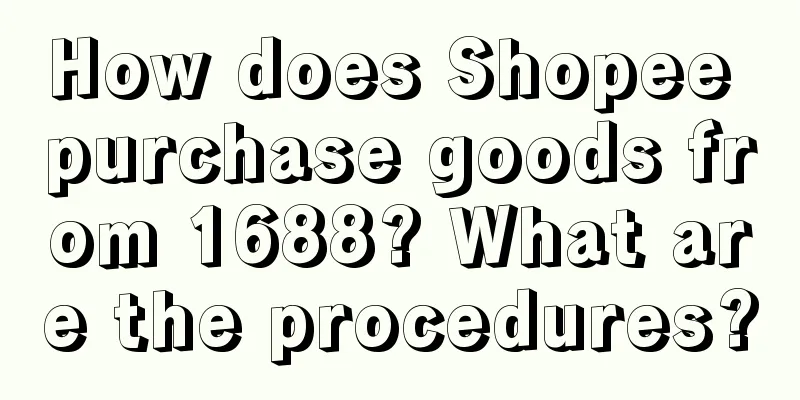What are the Amazon advertising combination strategies? Share the three major advertising combination strategies

|
There are many merchants who have opened stores on the Amazon platform. After opening a store, merchants need to continue to promote it. In fact, there are still certain benefits to using advertising combinations. So what are the specific strategies? The following content will answer your questions. What are the Amazon advertising portfolio strategies? Product launch strategies are divided into offensive strategies, defensive strategies and related strategies: 1. Offensive Strategy Find benchmark competitors, place products on their detail pages, and grab their traffic. Select the search term products with outstanding performance and use the search term report to: 1) The display volume average is set as the display volume threshold, and buyer search terms whose display volume exceeds the average are pulled out. 2) Arrange the click-through rates from high to low, and filter the buyer search terms whose conversion rates are not 0. 3) Filter out the search term products with * (automatic delivery). 2. Defense strategy Launch buyers’ own products to create a closed traffic loop. Prevent traffic loss: Prevent other sellers from invading valuable retail space in your listings. Multiple exposures strengthen brand awareness: Show store products to buyers multiple times to strengthen buyers' awareness of the brand. Seller suggestions: 1) Use different product features/styles/prices to position your brand. 2) Identify your main ASINs with high traffic, and use new product ASINs or long-tail ASINs to clear inventory. 3. Association strategy Locate related products for cross-selling. Functional complementarity: Products A and B are used together, and have the relationship of main product and by-product. Related products can be positioned through category placement and product placement. Complementary usage scenarios: Products A and B are used simultaneously in specific scenarios, and are positioned through product placement, with no distinction between main and by-products and no specific placement relationship. The above are three strategies for Amazon product advertising. Sellers in need can use them quickly. Mastering this strategy will be helpful for advertising. After all, for merchants, store traffic and sales are really important. Recommended reading: What to do if Amazon ads have low click-through rates? What are the reasons? What is the appropriate click-through rate for Amazon ads? How to improve it? What are the overall strategies for Amazon advertising? What are the techniques? |
>>: How to bid for Amazon manual advertising? What are the delivery methods?
Recommend
Learn from Lego: How to sell a single product for a hundred years
This article will analyze the successful marketing...
Do I need to speak a foreign language to open a Shopee store? How to open a successful Shopee store?
Everyone thinks that you must know English to do c...
Even if Cook comes, we have to buy goods. Huaqiangbei's "new specialty" is popular on Xiaohongshu
This article delves into how Huaqiangbei’s innovat...
How can a brand remain popular?
Why did the previously popular brands suddenly dis...
How do ancient celebrities who “traveled through time” to become bloggers navigate the Internet?
These ancient bloggers reinterpret historical figu...
Xiaohongshu's popular article routine [August]
This article analyzes the hot articles on Xiaohong...
After the price leveling, a new round of secret war among e-commerce platforms has begun
The price war among e-commerce platforms seems to ...
How to quickly increase sales of new products? 4 typical cases of different ways to promote hot products!
After launching a new product, how can a brand inc...
From the first milk tea-adapted animation in history, the growth history of Snow King IP
Mixue Bingcheng uses various marketing methods, la...
In a large company, professionalism is your confidence
Working in a large company, striving to expand you...
How to reduce the weight of short video editing and secondary creation?
Secondary creation can give new life to the origin...
What should new Amazon sellers learn? Essential knowledge for Amazon newbies
Amazon is a highly competitive and ever-changing m...
This year’s 618, which one has the cheapest price among Taobao, JD.com and Pinduoduo?
618 is here again, and major e-commerce platforms ...
What are the advantages and disadvantages of independent websites? What are they?
An independent website is different from a third-p...
How to modify the Shopee store profile picture? How to name it?
After we open a shop on Shopee, we need to set up ...









